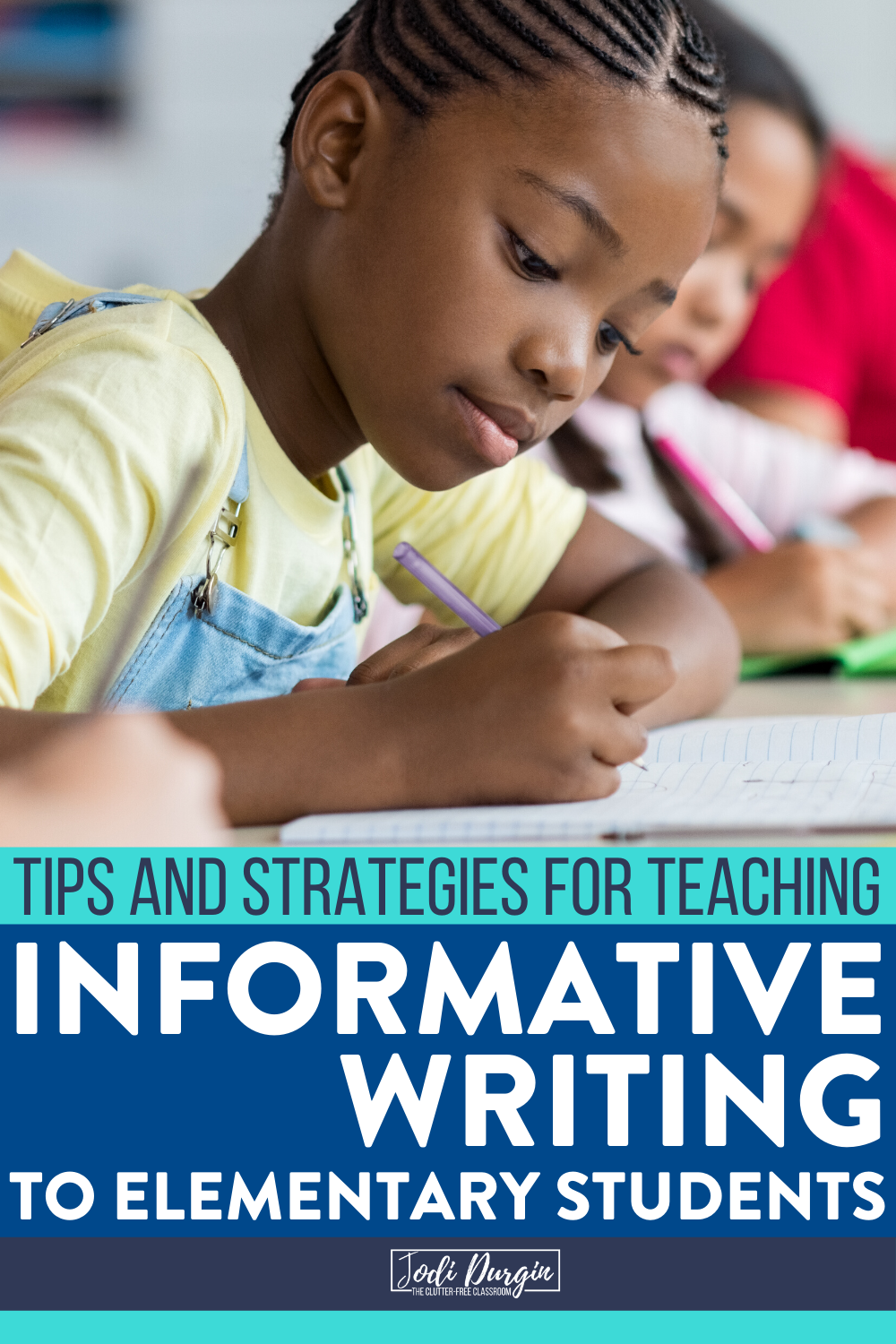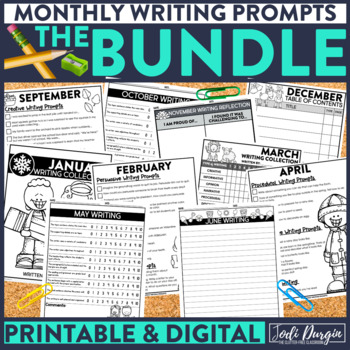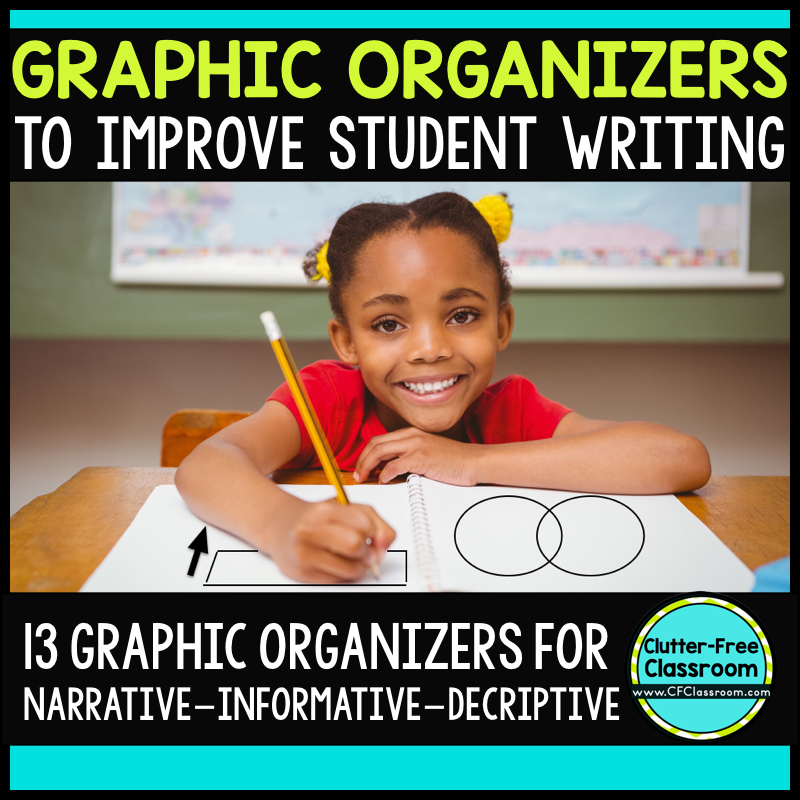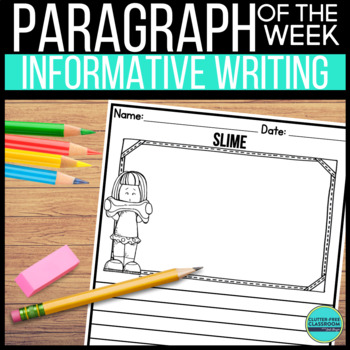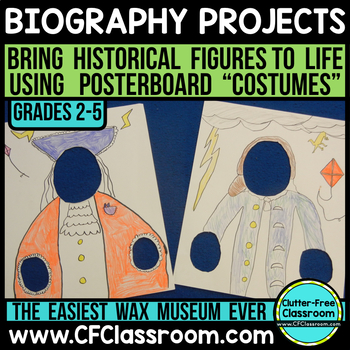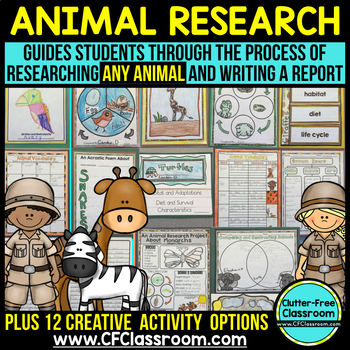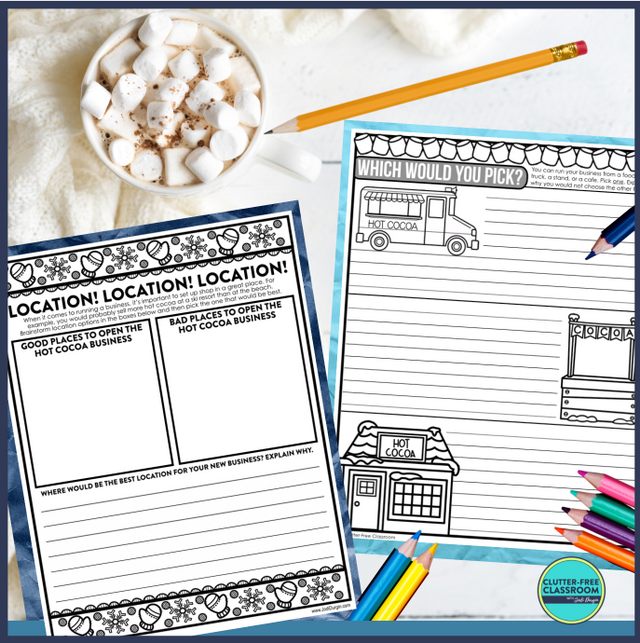Informative writing gives student authors a way to teach others about a topic using writing. This is such an important skill for students to have. This is because it’s the most common type of writing we use in our everyday lives. An example of when we use this is when we send and respond to emails. This post will define how informative and explanatory writing are similar and different and why they are important to teach. In addition, it will identify the Common Core standards and TEKS that relate to the topic. This will help us understand what specific skills we need to teach. Finally, it will suggest mini lesson ideas for teaching it in your elementary classroom. You’ll have lots of information and guidance around how to teach informative writing to your elementary students. Read below to learn how to teach informative writing!
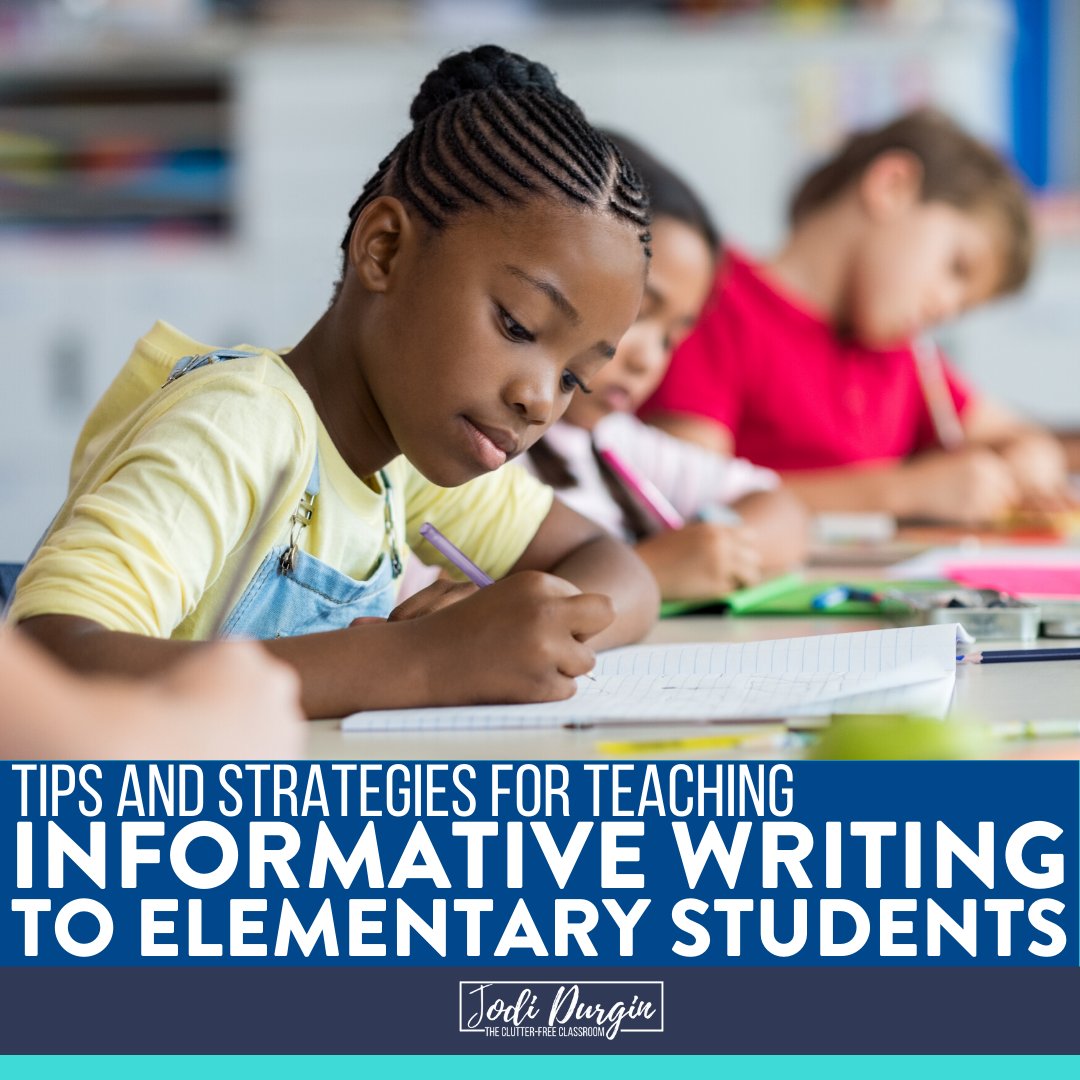
What is Informative and Explanatory Writing? What is the Difference?
Informative writing and explanatory writing are both about the author sharing information with readers. Informative writing provides facts and is meant to educate and inform readers. Explanatory writing, on the other hand, incorporates opinions into the writing. It is meant to persuade the reader to think a certain way about a topic.
What is the Purpose of Informative Writing?
The purpose of teaching informative writing is to teach students how to communicate information in written form. They do this by writing teaching books. These teaching books empower them to teach others about topics they research or know a lot about. In the process of developing an informative writing text, students accomplish a few things. First, they increase their knowledge about the topic they choose through research. Second, they develop a non-fiction author’s voice. Third, they learn the power of writing in helping them to communicate their ideas.
What do my Students Need to be able to do in their Informative Writing?
Your elementary students are likely required to learn informative writing. This is definitely the case if your state adopted the Common Core or TEKS. Read below to learn what specific research standards your grade level covers.
Informative Writing Standards in Common Core
Kindergarten
- Use a combination of drawing, dictating, and writing to compose informative/explanatory texts in which they name what they are writing about and supply some information about the topic. (ELA.W.K.2)
First Grade
- Write informative/explanatory texts in which they name a topic, supply some facts about the topic, and provide some sense of closure. (ELA.W.1.2)
Second Grade
- Write informative/explanatory texts in which they introduce a topic, use facts and definitions to develop points, and provide a concluding statement or section. (ELA.W.2.2)
Third Grade
- Write informative/explanatory texts to examine a topic and convey ideas and information clearly. (ELA.W.3.2)
- Introduce a topic and group related information together; include illustrations when useful to aiding comprehension. (ELA.W.3.2.A)
- Develop the topic with facts, definitions, and details. (ELA.W.3.2.B)
- Use linking words and phrases (e.g., also, another, and, more, but) to connect ideas within categories of information. (ELA.W.3.2.C)
- Provide a concluding statement or section. (ELA.W.3.2.D)
Fourth Grade
- Write informative/explanatory texts to examine a topic and convey ideas and information clearly. (ELA.W.4.2)
- Introduce a topic clearly and group related information in paragraphs and sections; include formatting (e.g., headings), illustrations, and multimedia when useful to aiding comprehension. (ELA.W.4.2.A)
- Develop the topic with facts, definitions, concrete details, quotations, or other information and examples related to the topic. (ELA.W.4.2.B)
- Link ideas within categories of information using words and phrases (e.g., another, for example, also, because). (ELA.W.4.2.C)
- Use precise language and domain-specific vocabulary to inform about or explain the topic. (ELA.W.4.2.D)
- Provide a concluding statement or section related to the information or explanation presented. (ELA.W.4.2.E)
Fifth Grade
- Write informative/explanatory texts to examine a topic and convey ideas and information clearly. (ELA.W.5.2)
- Introduce a topic clearly, provide a general observation and focus, and group related information logically; include formatting (e.g., headings), illustrations, and multimedia when useful to aiding comprehension. (ELA.W.5.2.A)
- Develop the topic with facts, definitions, concrete details, quotations, or other information and examples related to the topic. (ELA.W.5.2.B)
- Link ideas within and across categories of information using words, phrases, and clauses (e.g., in contrast, especially). (ELA.W.5.2.C)
- Use precise language and domain-specific vocabulary to inform about or explain the topic. (ELA.W.5.2.D)
- Provide a concluding statement or section related to the information or explanation presented. (ELA.W.5.2.E)
Informative Writing Standards in TEKS
Kindergarten
- Recognize characteristics and structures of informational text, including: (i) the central idea and supporting evidence with adult assistance; (ii) titles and simple graphics to gain information; and (iii) the steps in a sequence with adult assistance. (TEKS 8D)
- Dictate or compose informational texts. (TEKS 11B)
First Grade
- Recognize characteristics and structures of informational text, including: (i) the central idea and supporting evidence with adult assistance; (ii) features and simple graphics to locate or gain information; and (iii) organizational patterns such as chronological order and description with adult assistance. (TEKS 9D)
- Dictate or compose informational texts, including procedural texts. (TEKS 12B)
Second Grade
- Recognize characteristics and structures of informational text, including: (i) the central idea and supporting evidence with adult assistance; (ii) features and graphics to locate and gain information; and (iii) organizational patterns such as chronological order and cause and effect stated explicitly. (TEKS 9D)
- Compose informational texts, including procedural texts and reports. (TEKS 12B)
Third Grade
- Recognize characteristics and structures of informational text, including: (i) the central idea with supporting evidence; (ii) features such as sections, tables, graphs, timelines, bullets, numbers, and bold and italicized font to support understanding; and (iii) organizational patterns such as cause and effect and problem and solution. (TEKS 9D)
- Compose informational texts, including brief compositions that convey information about a topic, using a clear central idea and genre characteristics and craft. (TEKS 12B)
Fourth Grade
- Recognize characteristics and structures of informational text, including: (i) the central idea with supporting evidence; (ii) features such as pronunciation guides and diagrams to support understanding; and (iii) organizational patterns such as compare and contrast. (TEKS 9D)
- Compose informational texts, including brief compositions that convey information about a topic, using a clear central idea and genre characteristics and craft. (TEKS 12B)
Fifth Grade
- Recognize characteristics and structures of informational text, including: (i) the central idea with supporting evidence; (ii) features such as insets, timelines, and sidebars to support understanding; and (iii) organizational patterns such as logical order and order of importance. (TEKS 9D)
- Compose informational texts, including brief compositions that convey information about a topic, using a clear central idea and genre characteristics and craft. (TEKS 12B)
15 Informative Writing Mini Lesson Ideas
Below are 15 informative writing mini lesson ideas for elementary teachers:
- Defining informative writing
- Writing like an informational writer
- Differentiating between facts and opinions
- Selecting a topic
- Defining the research process
- Finding and evaluating sources
- Citing sources
- Taking notes using graphic organizers
- Paraphrasing information
- Summarizing information
- Organizing information
- Writing a lead
- Writing the body of the writing
- Strengthening writing
- Writing a conclusion
5 Informative Writing Resources for Teachers
Below are five resources that are great for teaching informative writing.
1. Monthly Writing Prompts
This year-long writing bundle contains 10 months worth of writing activities. They cover tons of different writing genres including creative, informative, opinion, narrative, procedural, descriptive, review, persuasive, poetry, and letter writing. These writing prompts were designed to do three things. First, provide students with regular writing practice. As teachers, we know how important it is for students to write daily to improve their writing skills. Second, teach a systematic approach to writing. This system for writing completely transforms how students understand writing structure. Third, build a love of writing amongst students. This might be the most important! These monthly printables will transform your young authors into excellent writers! Learn more about these monthly writing prompts!
2. Writing Graphic Organizer Activities
This writing resource provides meaningful practice to greatly improve your students’ writing skills. Each of the graphic organizers can be used over and over again and with any book you choose. It includes tons of different types of graphic organizers. Some examples are word choice charts, story maps, character webs, fact and opinion charts, two-column notes, Venn diagrams, and T-charts. Learn more about these writing graphic organizer activities!
3. Informative Paragraph of the Week Writing
Paragraph of the Week is a step-by-step process for teaching kids how to write a paragraph. It provides daily practice in both sentence writing and paragraph writing. Each weekly prompt breaks the writing process down into manageable pieces. This prevents students from feeling overwhelmed or reluctant to write. The format also allows for your advanced writers to focus on improving their craft. The 36 informative writing prompts, graphic organizers, writing paper, rubrics and more make it so easy. Everything you need is ready to print and go! Learn more about this informative paragraph of the week writing resource!
4. Biography Report
This biography report resource can be used to do a living biography museum. Students’ families come in to school and the students “perform” in character. The twist is that the students don’t dress in costume. It can be a hassle for the parents since most kids can’t put their own costume together. Instead, students make a poster board costume with a space for their head to pop through. It’s adorable and much easier for families!
In the past I’ve done the living museum and had students prepare a brief speech to recite in character. This year I opted to send it home as a homework project. I took their photos with their poster board and displayed them with the written report.
It can also be used as an independent research project in class or as a homework assignment.
5. Animal Research Project
This animal research project is a great opportunity for students to practice their informative writing skills. You can use it to do a simple animal study or a full integrated unit. From the graphic organizer worksheets to the writing stationary to the rubrics, you have everything you need.
We hope you found this information about how to teach informative writing to elementary students helpful! If you did, you may also be interest in these posts:
- How to Teach Research Skills to Elementary Students
- Tips for Organizing a Writing Center
- How to Teach Writing using the 6 Steps of the Writing Process
- Tips for Improving Student Writing Quickly and Easily
- How to Use Graphic Organizers to Improve Student Writing
